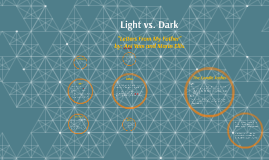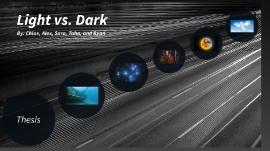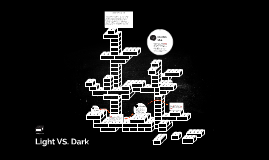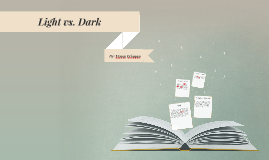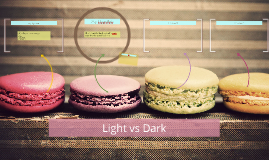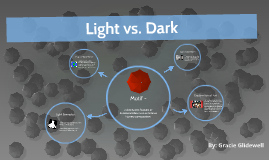Light VS. Dark
Transcript: Figurative Paragraph "He stared at the parlor that was dead and grey as the waters of an ocean that might teem with life if they switched on the electronic sun". "Maybe the books can get us half out of the cave. They just might stop us from making the same damn insane mistakes"! Montag's house isn't really a casual house. He doesn't have a everyday family, with children. The author describes his house with" it was like coming into a cold marbled room of a mausoleum after the moon has set. Complete darkness, not a hint of the silver world outside, the windows tightly shut, the chamber a tomb world where no sound could penetrate it. The author shows his house as a place where noting good happens, nothing good comes from it. Montag's House Quotes 1&2 Montag's House Paragraph Figurative "When Mildred ran from the parlor like a native fleeing an eruption of Vesuvius". The Vesuvius eruption was a famous volcano that erupted in AD 79 destroying the city of Pompeii and all of its residents. Bradbury used that allusion to give the readers a connection, if they knew about the eruption. The other quote, "play the man, Master Ridley : we shall this day light such a candle by God's grace, in England, as I trust shall never be put out", later on that page Beatty explains to Montag that "those words were spoken by a man named Latimer to Nicholas Ridley as they were being burnt alive at Oxford for heresy on October 16, 1555". The woman said it right before she killed herself with fire. 2 Quotes "Play the man, Master Ridley : we shall this day light such a candle by God's grace, in England, as I trust shall never be put out". "When Mildred ran from the parlor like a native fleeing an eruption of Vesuvius". Allusion Paragraph "The parlor was dead and Mildred kept peering in at it with a blank expression as Montag paced the floor and came back and squatted down and read a page as many as ten times, aloud". The author uses this personification and simile to show how Montag was lonely and felt left out. The metaphor "maybe the books can get us half out of the cave. They just might stop us from making the same damn insane mistakes", shows the big barrier between Montag and Mildred. He wants the truth, while she is happy to live through the lines of lies. Light VS. Dark Allusion 1&2 2 Quotes " It was like coming into a cold marbled room of a mausoleum after the moon has set. Complete darkness, not a hint of the silver world outside, the windows tightly shut, the chamber a tomb world where no sound could penetrate it. "He put his hand into the glove-hole of his front door and let it know his touch. The front door slid open". add logo here






